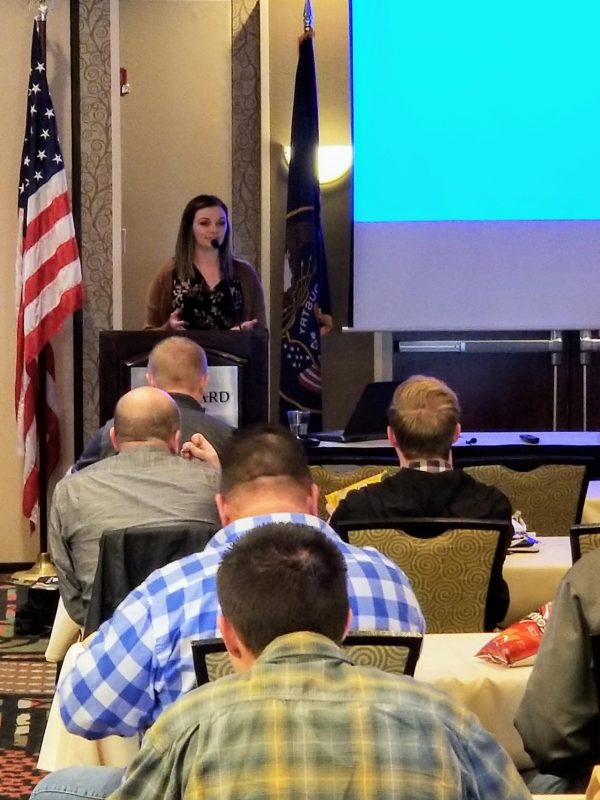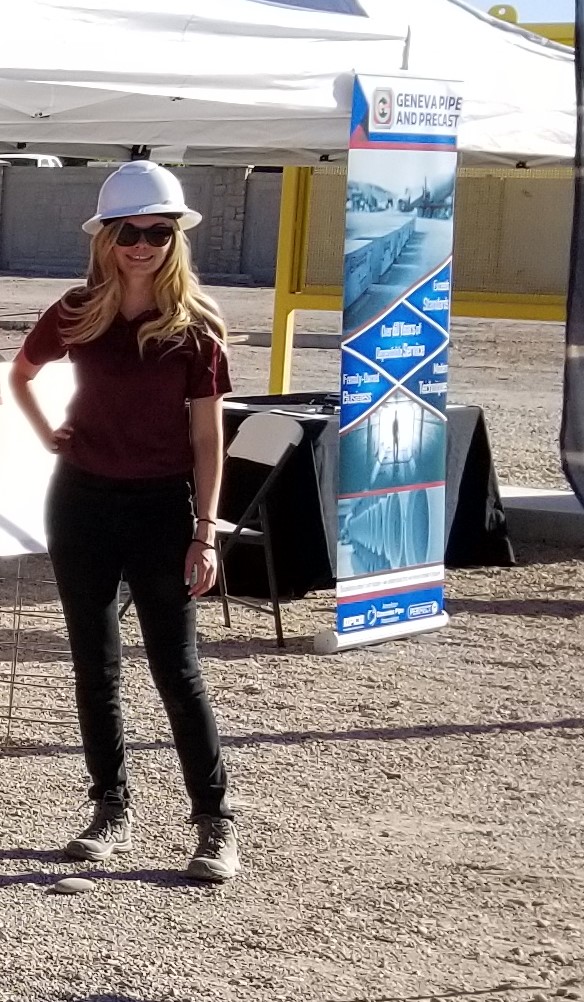
Technical Marketing Manager, Geneva Pipe & Precast A Northwest Pipe Company
Based in Utah, Heather Christensen provides technical training to engineers on reinforced concrete pipe and other precast structures including manholes, catch basins, box culverts and more. Heather says she became an engineer to make a difference: “I am excited to play a role in providing our nation with security, longevity and resilience so our society can continue to thrive for generations to come.”
What’s your favorite thing about being an engineer?
I have always enjoyed the STEM field because I have been fascinated by science and math. However, as I’ve gained more time and experience working as an engineer, I have begun to realize just how much of our societal functions depend on our line of expertise. It feels good to know that I can be part of that.
What do you like most about working in the concrete pipe industry?
I love learning about and becoming involved with the production of resilient and sustainable underground infrastructure. Concrete pipe is a great option for providing a long-term, structural solution for handling stormwater and sanitary sewer collection, and the concrete pipe and precast industry has a long, proven history. The importance of underground infrastructure often gets overlooked by society because it is out of sight. I have really enjoyed playing a part in ensuring it is well-considered and properly designed to provide adequate infrastructure for future generations.
How did you get started in the industry?
Jason Allen, director of the Mountain States Concrete Pipe Association, was a guest speaker at my senior design class in college. I was one of the primary project managers of the design class and was responsible for all communications between our class and any outside sources, such as guest speakers. After seeing his presentation, I became interested in the industry, and when he mentioned there was a position available, I jumped on the opportunity.
What’s one lesson you’ve learned in this industry that’s stuck with you?
It is incredibly important to communicate effectively and learn from others, as well as to make use of the resources around you. Understanding and utilizing available resources can get you further in less time than trying to figure out everything on your own. Furthermore, effective communication and collaboration can go a long way in ensuring that a project is a success.
What’s your most memorable project?
Although I spend much of my time as a marketing engineer, serving as a resource for engineers, I have been involved in several memorable projects. One was a Utah Department of Transportation project for which I designed two box culverts. One was 15×5.5 feet and the other 10×6 feet; at the time, they were the largest box culverts that I had designed. It was really rewarding to lead their design and then get to see the production, transportation and installation of such large structures for a local project.
If you were talking to a group of high school girls, what would you say to encourage them to become an engineer?
I would tell them how rewarding it is to take part in projects that help your local community. It is such a cool thing to see your work come to life and put to use to aid the day-to-day functions of society, ensuring that future generations have lasting infrastructure.

